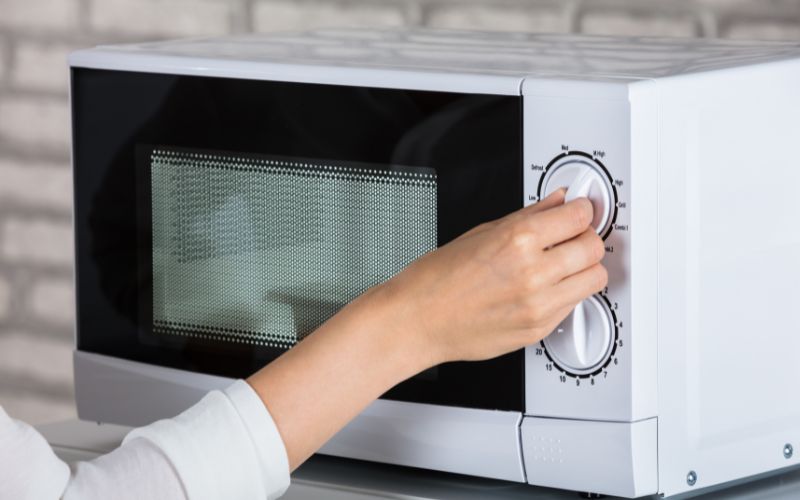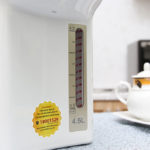Putting items on top of a microwave oven is a common practice in many households. It appears to save space and makes items readily accessible. However, this habit can pose various safety and functional risks to the microwave and even the users.
1 Is it safe to store items on top of a microwave oven?
Placing items on top of the microwave, though seemingly convenient and space-efficient, poses risks such as fire hazards and damage to the appliance and the stored items.
During operation, a microwave oven generates heat, vibration, and noise. Vibration can cause items placed on top to fall or become damaged, while heat can deteriorate them. Inferior quality plastic materials, for instance, can warp or melt if exposed to the microwave’s heat over time.
Furthermore, placing items such as tablecloths or cloths over the microwave can obstruct its ventilation holes or essential components. This impedes heat dissipation and reduces the appliance’s lifespan.
In unavoidable situations, such as limited kitchen space, you can place a small shelf over the microwave to store lightweight, non-breakable items.
 Placing items on top of a microwave can pose risks such as fire hazards and damage to the appliance and the stored items.
Placing items on top of a microwave can pose risks such as fire hazards and damage to the appliance and the stored items.
2 Ensuring safe and prolonged use of a microwave oven
- Avoid using nylon bags or low-quality plastic containers in the microwave.
- Always use glass containers to reheat food in the microwave.
- Allow the microwave to rest for 30 to 60 seconds between heating cycles to prevent overheating.
- Unwrap frozen food before placing it in the microwave.
- Ensure the microwave door is properly closed before operating it and avoid opening the door while it’s running.
- Clean the microwave regularly with a damp cloth and a specifically designed cleaning solution to keep it hygienic and odor-free.
- Do not use the microwave to dry towels or aprons.
- Avoid placing the microwave on top of a refrigerator or any electronic devices on top of the microwave.
 Ensuring safe and prolonged use of a microwave oven
Ensuring safe and prolonged use of a microwave oven
So, you now have the answers to “Is it safe to store items on top of a microwave oven? What are the risks and why?” Hopefully, this article has provided valuable tips for using your microwave oven safely and effectively.






































